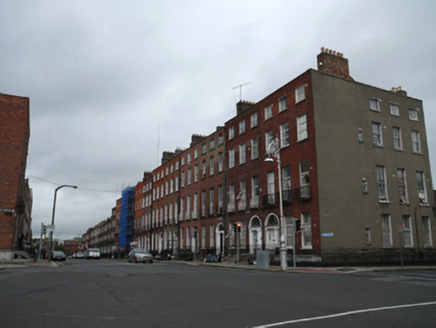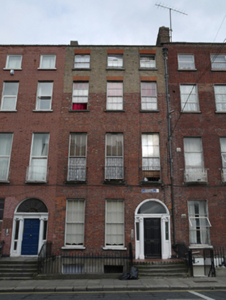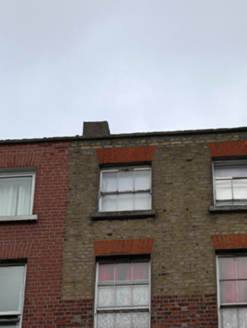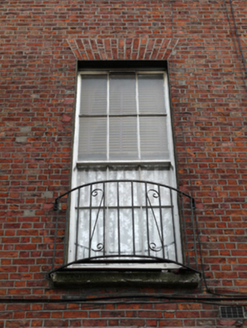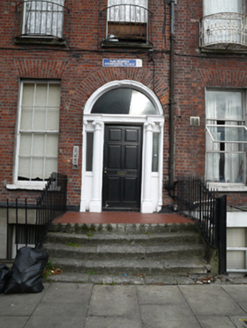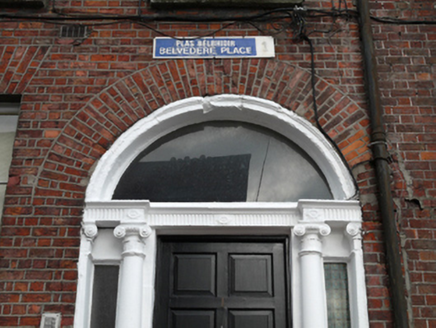Survey Data
Reg No
50010797
Rating
Regional
Categories of Special Interest
Architectural, Artistic
Original Use
House
In Use As
Apartment/flat (converted)
Date
1795 - 1805
Coordinates
316097, 235567
Date Recorded
03/10/2011
Date Updated
--/--/--
Description
Terraced three-bay four-storey house over raised basement, built c.1800, with two-storey rendered former coach house to rear. Now in multiple occupancy. M-profile roof hidden behind parapet wall with granite coping and lead hopper and downpipe breaking through to south end. Rendered chimneystack to north party wall, brick stack to south. Red brick walls laid in Flemish bond, rebuilt in yellow brick to the top floor, set on granite plinth course over ruled-and-lined cement rendered basement. Cement rendered walls to rear elevation. Gauged brick flat-arched window openings with flush rendered reveals, painted granite sills and replacement timber sliding sash windows, six-over-six pane to lower floors, three-over-three pane to top floor, with replacement red brick heads to top two floors. Six-over-six pane timber sash windows to second floor of rear elevation, with replacement uPVC elsewhere. Decorative wrought-iron balconettes to first floor windows. Gauged brick round-headed door opening with moulded masonry surround and painted masonry tripartite Ionic doorcase, with replacement timber door flanked by engaged Ionic columns on plinth blocks, re-glazed sidelights and responding Ionic pilasters, all supporting stepped fluted lintel cornice with plain fanlight. Door opens onto terracotta tiled granite platform and five granite steps, bridging basement area. Platform and basement enclosed by replacement steel railings, set on concrete plinth wall to street.
Appraisal
This typical Georgian townhouse forms part of a terrace of nine buildings abutting Nos. 18 and 19 Mountjoy Square East, and continuing the grand scale and detailing of the square. It retains a fine ample doorcase which provides a decorative focus to the facade. The retention of timber sash windows enhances the historic character of the building, and the landing and steps to the entrance, and the plinth and railings to the basement area appropriately define the street edge. Named after the Earl of Belvedere, it is one of eight planned streets connecting Mountjoy Square with major thoroughfares. Belvedere Place connects to Dorset Street on a gentle descent with a pronounced rhythm and verticality to the streetscape.
